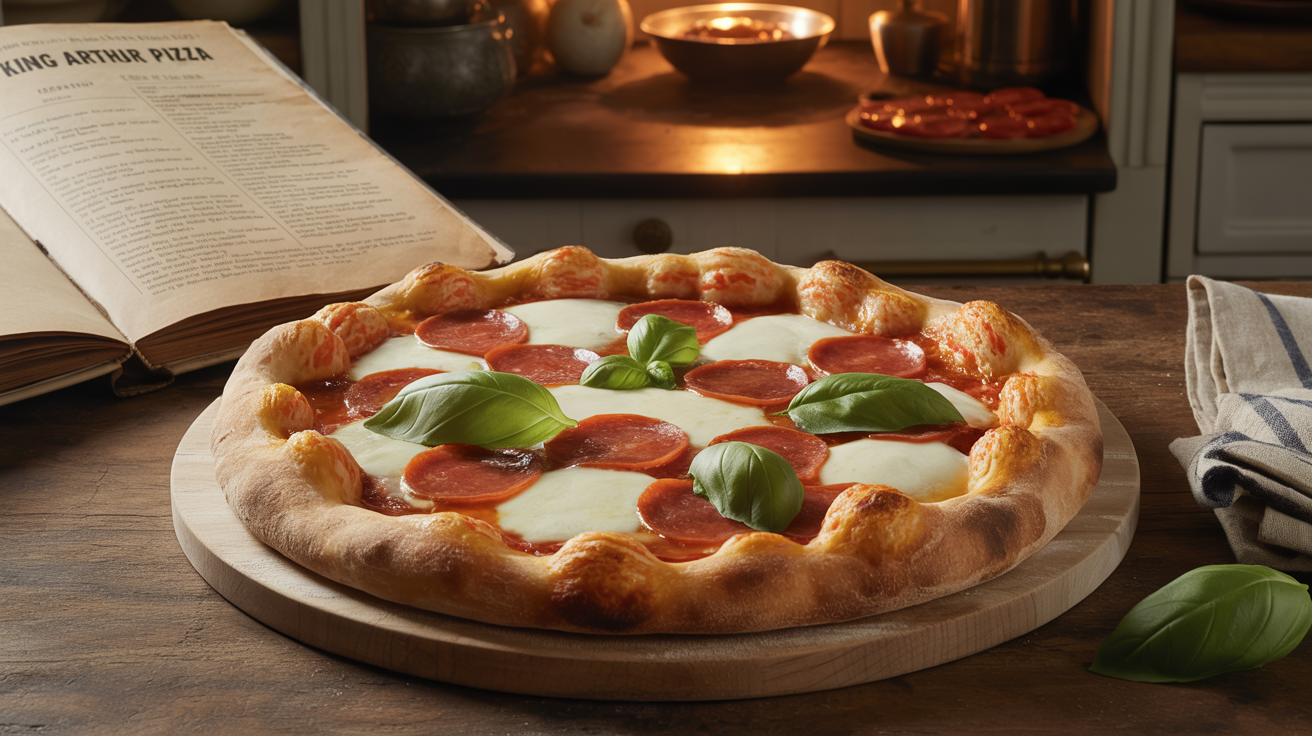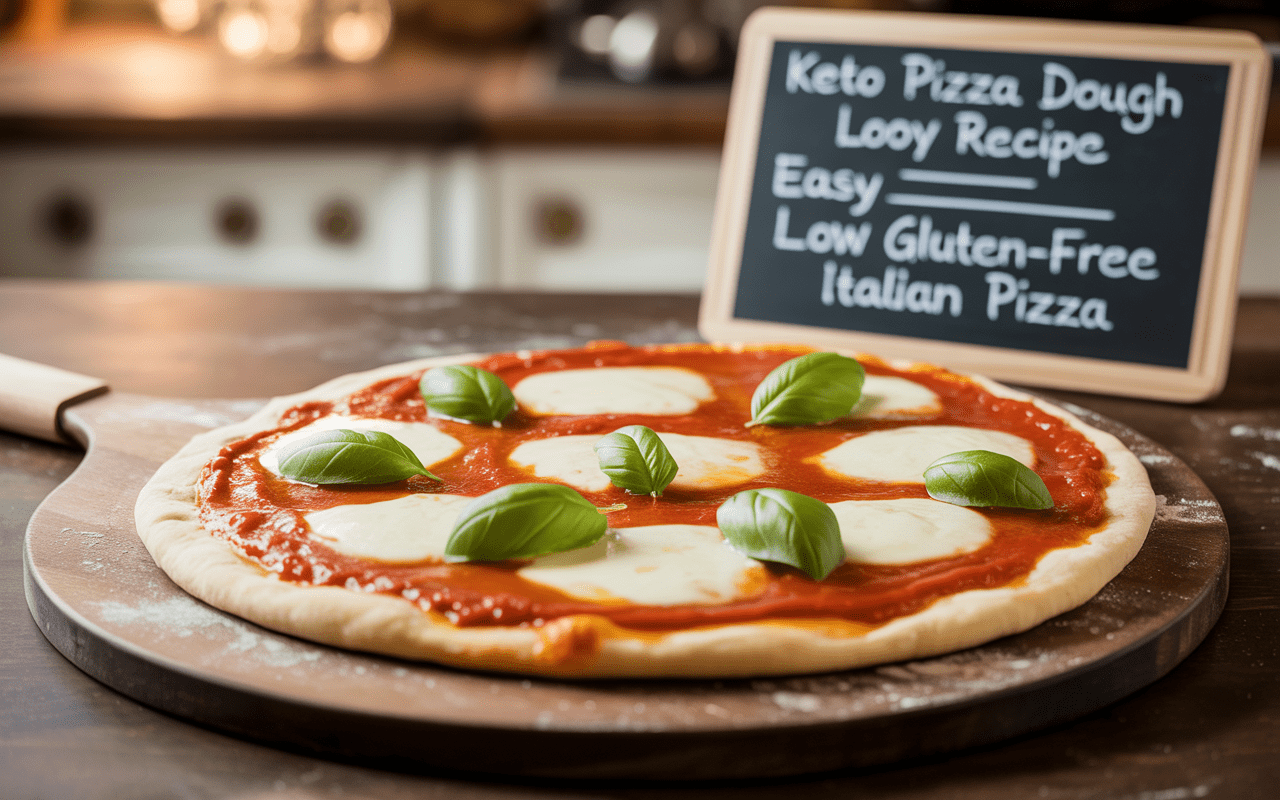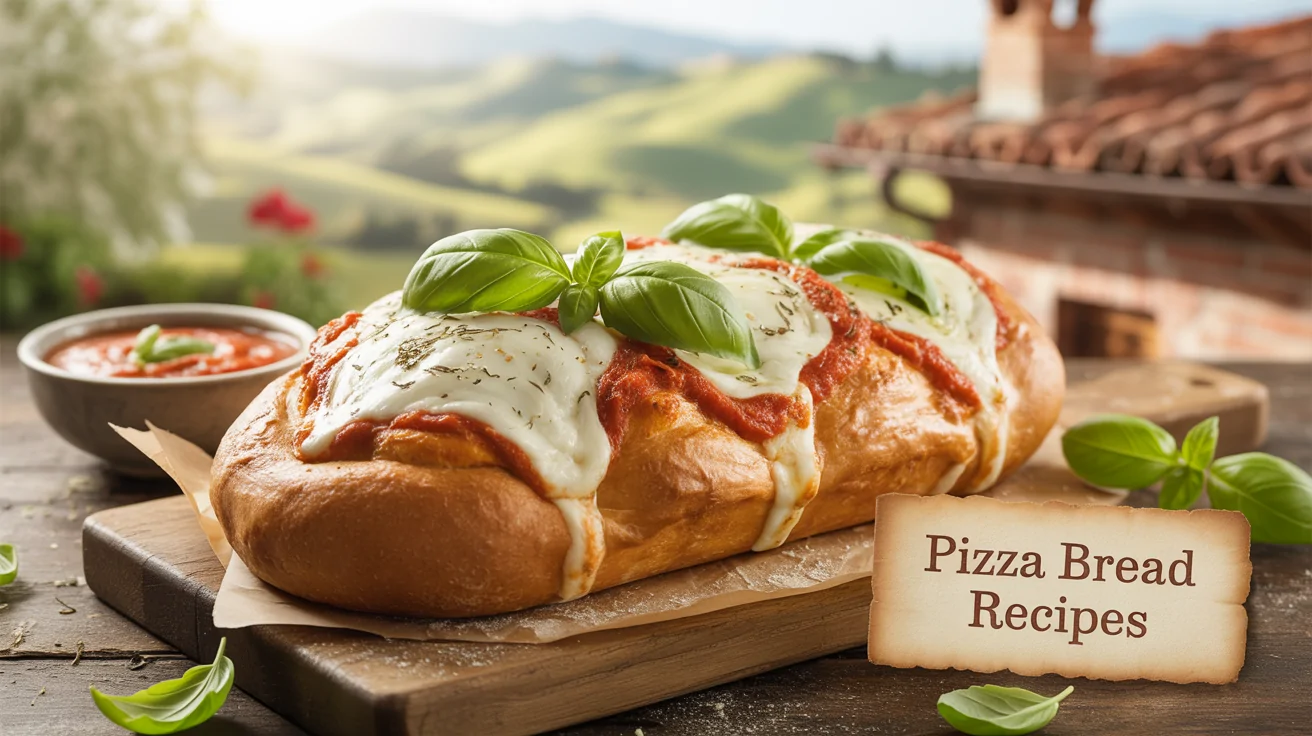King Arthur Pizza Recipe | Authentic Homemade Crust That’s Chewy, Crisp & Flavorful

King Arthur Pizza Recipe: My Tried-and-True Way to the Perfect Crust
There’s something magical about the first whiff of pizza dough as it rises on the counter. That faintly sweet, yeasty aroma mixed with a touch of olive oil always makes me smile. It’s a smell that promises comfort, warmth, and the kind of meal that brings everyone to the table.
For me, the dough that changed my pizza game forever was the King Arthur pizza recipe. If you’ve ever baked with King Arthur flour, you know — it’s quality you can trust. Their recipe is solid, reliable, and just about foolproof. But after years of making it over and over (and sneaking in little tweaks), I’ve shaped it into my own version. One that’s chewy, crisp, airy, and packed with flavor.
And let me tell you… once you try it, pizza night at home will never be the same.
Why I Swear By This King Arthur Pizza Dough
There are a lot of pizza dough recipes out there, but here’s why this one works every time:
- The flour makes all the difference. King Arthur bread flour has a higher protein content. That means better gluten development, which gives your crust that irresistible chew.
- Slow fermentation = flavor. Letting the dough rest overnight in the fridge develops those deep, complex flavors that make each bite taste like it came from a pizzeria.
- It’s versatile. Whether you’re baking on a pizza stone, steel, or a cast iron skillet, this dough performs beautifully.
In short: it’s the perfect starting point.
Ingredients You’ll Need
Here’s my adapted version of the classic King Arthur flour pizza dough recipe.
| Ingredient | Measurement | Notes |
|---|---|---|
| King Arthur Bread Flour | 3 ½ cups (420g) | High protein = chewy crust |
| Warm water (90–100°F) | 1 ⅓ cups (315ml) | Perfect for yeast activation |
| Instant yeast | 2 teaspoons | Or 2 ¼ tsp active dry |
| Olive oil | 2 tablespoons | Adds tenderness + flavor |
| Honey or sugar | 1 teaspoon | Helps browning & yeast |
| Salt | 1 ½ teaspoons | Don’t skip! |
| Semolina (optional) | 2 tablespoons | Great for dusting peel |
This makes enough dough for two 12-inch pizzas or one big sheet-pan style pizza.
How to Make It (Step by Step)
1. Mix the dough
Grab a big bowl (or your stand mixer). Combine flour, yeast, honey, and salt. Pour in warm water and olive oil. Mix until a rough dough forms.
Now knead: 7–10 minutes by hand, or about 5 minutes with a dough hook. The dough should be smooth, springy, and just a little tacky.
2. First rise
Place the dough in an oiled bowl, cover it, and let it rise for 1 ½–2 hours until doubled.
Want the best flavor? Pop it in the fridge overnight (up to 72 hours). That slow ferment is where the magic happens.
3. Shape
Turn the dough out, divide in two, and form tight balls. Let them rest 20–30 minutes under a towel. This relaxes the gluten so you can stretch without fighting the dough.
When shaping, press from the center out, leaving a puffier edge for the crust. Skip the rolling pin — hand-stretching gives you those gorgeous air bubbles.
4. Preheat the oven
Stone, steel, or skillet — whatever you’re using, get it screaming hot. Preheat at 500°F (260°C) for at least 45 minutes. High heat = pizzeria-level crust.
5. Sauce and toppings
Brush the dough lightly with olive oil before adding sauce — it keeps things crisp. Then go in with your toppings:
- Classic Margherita: fresh mozzarella, San Marzano tomatoes, basil.
- Pepperoni lover’s dream: plenty of slices, a little oregano.
- White pizza: ricotta, garlic, spinach.
Keep it light. Too many toppings = soggy pizza.
6. Bake
Slide the pizza onto your stone/steel. Bake for 7–10 minutes until the crust is golden, the cheese bubbly, and little brown blisters pop up.
Take it out, let it rest for a minute or two (yes, it’s hard to wait). Slice. Bite. Fall in love.
My Tips for Pizza Perfection
- Bread flour beats all-purpose. It makes the crust chewy in the best way.
- Cold ferment is worth it. Even just 24 hours in the fridge adds incredible flavor.
- Dust with semolina. It prevents sticking and adds a subtle crunch.
- High heat is non-negotiable. Pizza loves heat. Push your oven to the max.
- Finish with olive oil. That drizzle after baking? Pure bliss.
FAQ
Q: Can I freeze the dough?
Yes. After the first rise, wrap dough balls in plastic wrap and freeze up to 3 months. Thaw overnight in the fridge.
Q: Do I have to use King Arthur bread flour?
It’s my top pick for this recipe. But you can sub King Arthur all-purpose for a lighter crust.
Q: Can I make it same-day?
Absolutely. Let it rise 2 hours at room temp and you’re good. But if you can, do the overnight ferment — it’s a game-changer.
Q: No pizza stone — what now?
Use a preheated cast iron skillet or an upside-down baking sheet. Both work great.
Final Thoughts
There’s a reason I keep coming back to this King Arthur pizza recipe. It’s simple. It’s reliable. And it makes some of the best homemade pizza I’ve ever eaten.
The crust is everything you want: chewy, crisp, golden, with just enough airiness. Paired with fresh sauce, gooey cheese, and your favorite toppings — it’s pure joy on a plate.
If you’ve never tried making your own dough, this is the recipe to start with. And if you’re already a pizza night regular, I promise this version will take your game to the next level.
So grab that bag of King Arthur flour, preheat your oven, and get ready. Because once you’ve tasted this crust, there’s no turning back.
Pizza night will never be the same — and that’s a very good thing. 🍕
See Also: Home Made Pizza Recipe | Authentic Italian-Style Pizza at Home

Vinit Hirave is a passionate content writer for Pizzetteria Brunetti. A true pizza enthusiast, Vinit’s love for authentic flavors goes beyond the keyboard—he has hands-on experience working in a pizza shop, giving him a deep understanding of what makes a perfect slice. Through his writing, he shares stories, tips, and insights that reflect both his industry knowledge and his genuine affection for the art of pizza-making.










Leave a Reply